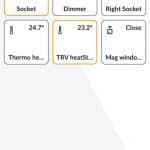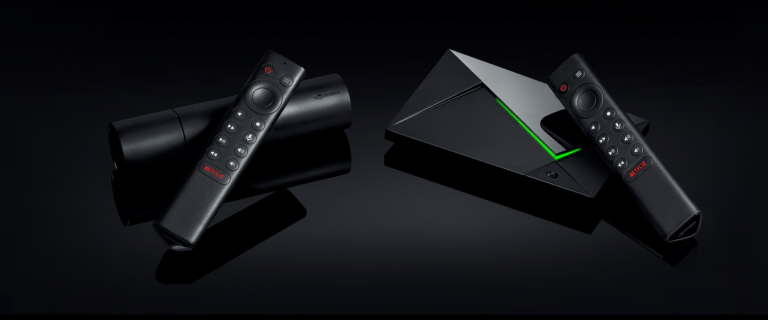Any links to online stores should be assumed to be affiliates. The company or PR agency provides all or most review samples. They have no control over my content, and I provide my honest opinion.
I previously reviewed the Lightwave system nearly two years ago, and while I did find some issues with the lack of sensors and the proprietary communication technology, it is an excellent system and the only system available that offers proper built-in smart plug sockets.
Smart Home technology has boomed since then with the introduction of Alexa and Google Home and Lightwave have followed up from their original Link system with the new Link Plus which works with Alexa, Google and Apple HomeKit. The system still primarily focusses on lighting, plug sockets, and heating. They also do relay switches which would allow you to control your curtains or garage door. If you don’t fancy swapping out your plug sockets, they also have plug and play adaptors.
There seem to be more sensors added to the Lightwave website than the previous review. Now you have options for movement, a magnetic switch/trigger and an electricity monitor. It is a long way off the multi-sensor devices you can buy for z-wave, but it should be adequate for many scenarios.
The new Lightwave Link Plus controller is fully backwards compatible with the Generation 1 devices, however, if you have a generation 1 controller it will not be able to us the generation 2 devices.

Set up
Initial set-up is quite straightforward. The Link Plus gateway just needs powering via microUSB, and then plugging into ethernet, from here you will set up the device via your mobile. You need a Lightwave account then just add the Link Plus using the code on the back of it. It took me about 5 minutes to set up.
Then you need to proceed to add your devices to the system. The linking part of this is quite straightforward; you just choose to add the device via the app and follow the onscreen instructions. It normally involves just holding a button down on the device you are trying to link. Once linked you then have full control over the device.
The hard part about setting up this system is the physical installation. First of all is the light switches require quite a large back box to fit, so in my case, I had to use the included adaptor to give it some more room, this makes the switch stick out from the wall quite a lot, so isn’t the most attractive option. Secondly, I had issues getting the switches to work in my house I am 99% sure the issues I faced were due to the ancient wiring. One room it just didn’t seem to want to power up, another room it powered up but did nothing when I tried to control the lighting. Now, these issues are not Lightwaves fault so that I won’t mark it down on my scores for it, but getting things like the light switches to work can be tricky.
It is also worth noting that the light switches don’t work with all bulbs and they have a full compatibility list here. The dimmers should work with all dimmable LEDs but there can sometimes be issues.
If you use the adaptor the light switches will stick out quite a bit but apart from that they look attractive. I was sent some brushed metal switches, but you can also buy white ones.
In Use
Once set up though, using the system is quite easy to use you can control all your devices individually switching them on or off. With lights, you can select the brightness too. You can assign the devices to the room which lets you manage them more easily, and then you can also set up automation tasks. For example, I can have all the plugs and lights power up in my office first thing in the morning. During my testing, all these features worked well without issues, and the system is easier to use than the Z-Wave Devolo system I have reviewed.
The main selling point of the new Link Plus is the ability to work with all the new voice activation systems on the market such as Alexa and Google. I use Google, so this is what I tested it with, setting up within Google is quite straightforward, and the same as other services. You will need to go to Google Home, then home control, add devices and then select LightwaveRF. You then just need to log in and activate the service. From here you can add the devices to your Google Home system. I had some issues getting it to add at first but once paired up everything worked the same way as it does with my existing devices within Google Home which includes Hue and TP-Link Kasa.
With all the devices set up for the correct room, I can issue typical Google Home commands such as Turn Office Plus On, Turn Lights on etc. Everything seems to work well in this manner and it is the option I use to control the system.
One of the issues I previously had with this system was the fact it was proprietary, so getting it to work with other home automation systems was difficult. This issue is still partially true, you can’t just add the devices to an existing Z-Wave system, and newer multi-protocol controllers such as the Athom Homey don’t work with Lightwave. However, Lightwave now has IFTTT integration, and the voice control options will allow you to merge multiple systems.
**
A commenter has pointed out that the gen 2 link plus does not have lighting IFTTT integration. I suspect it will be enabled at some point, but there appears to be no word on it yet.
**
As I use Philips Hue and TP-Link Kasa at home, I found that I rarely use the actual Lightwave App, having to go into three different apps to control specific devices defeats the point of a home automation system. So using Google Home, you can control all the different technologies in one place.
Pricing
Unfortunately, all home automation systems are very expensive, it is not so much the gateway or starter kit you might buy, but if you want to use the system properly, you need to invest in a lot of the switches and sockets to go along with it. In the case of Lightwave, it is quite competitive, if not cheap; the Link Plus is £129.95 whereas with Z-Wave there are only two gateways cheaper which are the DLINK and Vera Edge. The nCube I reviewed recently costs £149.00 and the Z-Wave Devolo Home Control Starter Pack is £179.99.
The costs start to add up when you buy lots of dimmers, sockets etc. A 2-button dimmer is £59.99 for generation 2 or £44.99 for a gen one dimmer. In comparison, the cheapest Z-Wave solution I can find is the rather ugly TKB Dual Paddle Wall Dimmer for £42.99 or the sleeker looking Z-Wave MCO Touch Panel Switch which costs over £80!
Overall
With the implementation of IFTTT and voice control, Lightwave has fixed many of the issues I had in the original system. It is still the only home automation system on the market where you can properly replace your light switches and plug sockets; this is a major selling point in my opinion as having to use socket adaptors is annoying, to say the least.
At the moment the new Lightwave App is receiving mixed reviews, with users of the generation 1 devices having some issues. I didn’t have any generation 1 devices available to test, but it may be worth keeping an eye out on forums and reviews if you are an existing user wanting to upgrade.
For new users, you shouldn’t have any issues, as you won’t have any experience of the older app to compare.
You can buy the Lightwave system direct from Lightwave and several of their products are listed on Amazon for under the RRP.
Lightwave Link Plus Review

Product Name: Lightwave Link Plus Review
Offer price: 129.95
Currency: GBP
Availability: InStock
Overall
80%-
Features - 85%85%
-
Price - 85%85%
-
Cross Compatibility - 75%75%
-
Ease of Use - 75%75%
I am James, a UK-based tech enthusiast and the Editor and Owner of Mighty Gadget, which I’ve proudly run since 2007. Passionate about all things technology, my expertise spans from computers and networking to mobile, wearables, and smart home devices.
As a fitness fanatic who loves running and cycling, I also have a keen interest in fitness-related technology, and I take every opportunity to cover this niche on my blog. My diverse interests allow me to bring a unique perspective to tech blogging, merging lifestyle, fitness, and the latest tech trends.
In my academic pursuits, I earned a BSc in Information Systems Design from UCLAN, before advancing my learning with a Master’s Degree in Computing. This advanced study also included Cisco CCNA accreditation, further demonstrating my commitment to understanding and staying ahead of the technology curve.
I’m proud to share that Vuelio has consistently ranked Mighty Gadget as one of the top technology blogs in the UK. With my dedication to technology and drive to share my insights, I aim to continue providing my readers with engaging and informative content.














The gen 2 link plus does not have lighting IFTTT integration so the review is a bit misleading
Apologies, I will amend the review to reflect this.